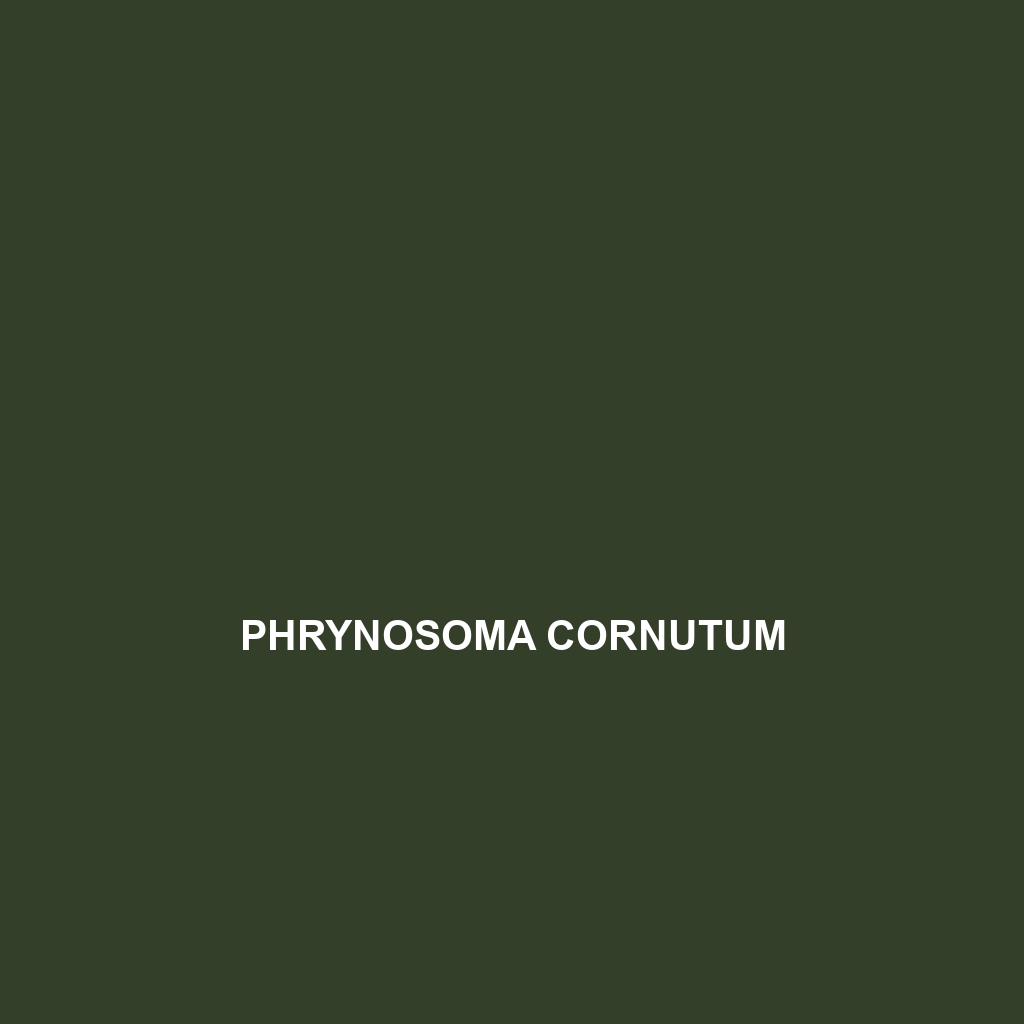Common Name
Phrynosoma cornutum
Scientific Name
Phrynosoma cornutum
Habitat
Phrynosoma cornutum, commonly known as the Texas horned lizard, is primarily found in the southwestern United States and northern Mexico. This species inhabits a variety of environments, including arid deserts, scrublands, and grasslands. They prefer regions with loose, sandy soils as it aids in their burrowing behavior. With a climate that is typically hot and dry, Phrynosoma cornutum can often be spotted basking in the sun during the day, as it relies on external heat sources to regulate its body temperature.
Physical Characteristics
The Texas horned lizard is characterized by its distinctive horn-like projections located on the frill of its head, along with spiny scales covering its body. Adult individuals can reach sizes of up to 4-5 inches in length, making them relatively small compared to other lizard species. Their coloration exhibits a range from gray to brown, often with patched markings that provide excellent camouflage against the rocky terrain. This unique physical structure not only aids in predator evasion but also plays a role in water conservation by minimizing heat absorption.
Behavior
Phrynosoma cornutum exhibits several notable behaviors that aid in its survival. During the daytime, they tend to be solitary, basking on warm surfaces such as rocks or sandy locales to absorb heat. As a response to threats, these lizards display a remarkable defensive behavior, such as flattening their bodies against the ground and remaining motionless to blend in with their surroundings. Although generally diurnal, they may exhibit nocturnal behavior in extremely hot conditions. Mating rituals occur in spring, often involving males displaying aggressive behaviors to establish dominance over potential mates.
Diet
Texas horned lizards have a diet primarily composed of ants, making them specialized insectivores. They can consume thousands of ants during a single foraging session, which typically occurs in early morning or late afternoon. In addition to ants, they may also occasionally consume other small insects, contributing to their role in the ecosystem as both predator and prey. This specialized diet necessitates a habitat where ant populations are abundant.
Reproduction
The reproductive cycle of Phrynosoma cornutum begins in the spring months, with mating typically occurring between April and June. Females lay 10-30 eggs, often in sandy soil where the temperature helps incubate the eggs. The gestation period lasts about 6-8 weeks, after which the hatchlings emerge, fully independent and capable of fending for themselves. Parental care is not exhibited post-hatching, as the young must quickly adapt to their environment to survive.
Conservation Status
As of the latest evaluations, Phrynosoma cornutum is classified as least concern on the IUCN Red List. However, local populations have faced challenges due to habitat destruction and urbanization. Conservation efforts are vital in maintaining their habitats and ensuring that the ecological balance is not disturbed. Awareness of their role in the ecosystem and their dietary specialization helps highlight the importance of preserving their natural environments.
Interesting Facts
One of the most fascinating adaptations of the Texas horned lizard is its ability to shoot blood from its eyes as a defensive mechanism to deter predators. This unusual behavior can startle potential threats and provide the lizard a chance to escape. Additionally, Phrynosoma cornutum is often regarded as a symbol of the southwestern United States, being featured in various cultural references and conservation efforts related to desert ecosystems.
Role in Ecosystem
Phrynosoma cornutum plays a critical role as both predator and prey within its ecosystem. By controlling ant populations, these lizards help maintain the balance of their environments. They serve as an important food source for larger predators, including birds and mammals, thus supporting the food web. Their existence contributes to the biodiversity and health of desert and grassland ecosystems, emphasizing the need for conservation strategies aimed at preserving their habitats.
This structured, detailed description incorporates necessary keywords for SEO optimization while providing a comprehensive overview of the Texas horned lizard, aiming to engage readers with informative content.
